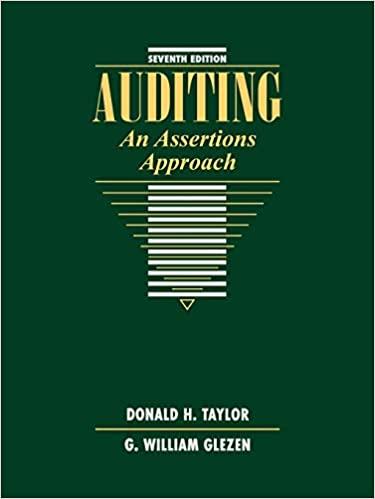During the course of acquiring an understanding of the internal control of her client, Consent Company, Ms.
Question:
During the course of acquiring an understanding of the internal control of her client, Consent Company, Ms. Search was pleased to discover that the recordkeeping in general and the accountability for assets were good. Also, transactions were approved by the proper individuals, and there was an adequate segregation of duties of sensitive responsibilities.
Ms. Search, however, was concerned about some aspects of the company's organizational structure and about the attitude of some of the company's top executives. For example:
1. The company used a system of budgets and standards but paid little attention to deviations unless they were extremely large.
2. The company had a credit manager who approved all credit sales above a certain amount. As far as Ms. Search could tell, the credit manager had no discernible criteria but simply approved or disapproved credit on an "intuitive" basis. Credit was rarely disapproved.
3. The yearly financial statements were always compiled a few days after the end of the fiscal year. Many times, accruals were omitted and were subsequently recorded only at the insistence of the auditor.
4. The internal auditors did little except routine clerical work and reported to the controller.
5. The incentive pay of department heads was reduced if the departmental physical inventory count was less than 99 percent of the amount on the departmental perpetual inventory records.
Required:
a. Give reasons why Ms. Search might assess control risk at maximum and perform extensive substantive tests. Be specific as to which accounts (or account assertions) would require the most extensive substantive tests. (You need not name the substantive tests.)
b. Give reasons why Ms. Search might assess control risk below maximum.
Step by Step Answer:

Auditing An Assertions Approach
ISBN: 9780471134213
7th Edition
Authors: G. William Glezen, Donald H. Taylor





